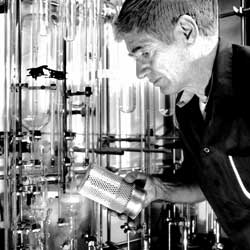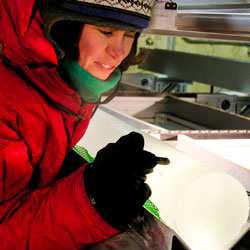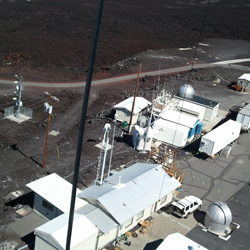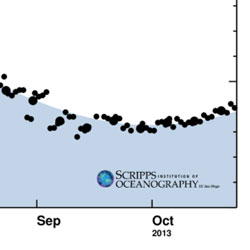Levels exceeded 409 parts per million for the first time in recorded history this month
Measurement Note: An Adjustment to the Record
On Nov. 5, 2015, we made an adjustment to the Scripps Mauna Loa CO2 record that has the effect of increasing concentrations we have reported since April 2015
Is This the Last Year Below 400?
Leader of Keeling Curve measurement says temporary bump from El Niño could push atmospheric CO2 levels above symbolic threshold for good
What Does This Number Mean?
Repost of April 2013 entry The Mauna Loa carbon dioxide (CO2) record, also known as the “Keeling Curve,” is the world’s longest unbroken record of atmospheric carbon dioxide concentrations.
Is the Rate of CO2 Growth Slowing or Speeding Up?
The rate of growth in carbon dioxide concentrations in the atmosphere has accelerated since the beginnings of the Keeling Curve.
A note on recent readings
In response to a recent reader comment about wide fluctuations in CO2 readings at Mauna Loa, Ralph Keeling and Stephen Walker of the Scripps CO2 Group gave the following answer: It’s fairly normal, especially in the summer time, to see strong afternoon “dips” in the CO2 concentration. The dips are generally caused by upslope winds that that are depleted in … Read More
How are CO2 Data Processed?
Scientists make CO2 measurements in remote locations to obtain air that is representative of a large volume of Earth’s atmosphere and relatively free from local influences that could skew readings.
How are ice-core data and Mauna Loa atmospheric data made comparable?
Some readers of the Keeling Curve website have asked us about the graphs that show carbon dioxide concentrations since 1700 and over the past 800,000 years, which use a combination of data derived from analysis of the gas contained in ice cores and that obtained from air sampled at Mauna Loa Observatory in Hawaii.
Comment on Recent Readings in Excess of 400 ppm
Instruments at the Mauna Loa Observatory in Hawaii recorded atmospheric levels of carbon dioxide greater than 400 parts per million on March 12, 2014 nearly two months earlier than the date on which the milestone was passed in 2013.





